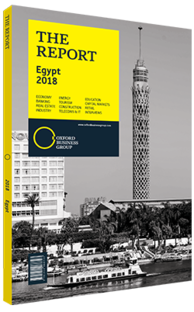Private producers in Egypt set to increase power generation
As Egypt looks to raise its generation capacity to meet rising demand, the government is seeking to attract independent power producers (IPPs) to a newly liberalised market. Renewable energy plans for 2015-23 call for 920 MW to be provided by IPPs, in addition to the 3.2 GW of government-operated projects and 1.25 GW generated under build-own-operate mechanisms. Complementing this is a goal to secure 20% of generation from renewable sources by 2022.
BENBAN COMPLEX: The 1.8-GW Benban solar complex in Aswan, Upper Egypt, scheduled for completion in 2018, is key to achieving these targets. The facility will be one of the largest solar producers in the world. As detailed by the New and Renewable Energy Authority (NREA), the 37.2-sq-km site is divided into 41 plots that have been made available for individual photovoltaic (PV) projects, along with accompanying roads, substations, a high-voltage interconnection and a water supply pipeline. The energy generated from these individual solar power plants will be directly connected to the national grid for countrywide distribution. State-owned transmission system operator the Egyptian Electricity Transmission Company has offered 25-year power purchase agreements (PPAs) for participating companies.
Benban has attracted much interest, supported by international institutions such as the International Finance Corporation, the European Bank for Reconstruction and Development (EBRD), and the African Development Bank. Companies involved include local players, such as Orascom Construction and Elsewedy Electric, regional firms like Alfanar Energy and ACWA Power (both from Saudi Arabia), Philadelphia Solar (Jordan) and Phoenix Power (Oman), and international project developers, such as Scatec Solar (Norway).
While some companies are focused on standalone PV schemes, others are building multiple projects. Scatec signed a 25-year PPA for 400 MW from six solar projects, an investment valued at $450m, comprising equity from Scatec ($50m-70m), KLP Norfund Investments and other private developers, and $350m from an EBRD-led consortium. Saudi Arabian utility ACWA Power will be developing three projects totalling 165.5 MW, requiring investment of $190m.
POLICY CHALLENGES: In 2014 Egypt established a feed-in-tariff programme for wind and solar projects, meant to help incentivise private players to provide 4.3 GW of new production capacity.
As noted in a 2016 presentation by the NREA, the scheme attracted 187 applicants, 136 of which were qualified. However, there have been challenges getting companies and the government to agree to terms. In September 2016 updated terms for the tariff scheme were announced, reducing rates and leading some companies to pull out of the programme.
For the Benban complex, companies have also noted that the dispute-resolution mechanism proposed by the government and local funding restrictions are untenable. In April 2017 local press covered the withdrawal of 23 companies from these projects due to increased cost sharing of the infrastructure.
Moving forward, ensuring that the terms of feed-in tariffs or alternative incentives remain attractive willbe vital to encouraging private investment. Ahmed Hafez, co-head of research and senior analyst, industrials, at HC Securities & Investment, told OBG, “A considerable amount of business could happen in renewables, but it depends on whether the government opens up to competitive bidding rather than sticking to the feed-in tariff programme.”
As Anhar Hegazi, former director of the Sustainable Development and Productivity Division at the UN Economic and Social Commission for Western Asia, told OBG, “In addition to the significant land the government has allocated for IPPs these projects IPPs are now served by the established legislative and policy frameworks.” Despite some setbacks, the commitment to diversify energy suppliers is strong.
You have reached the limit of premium articles you can view for free.
Choose from the options below to purchase print or digital editions of our Reports. You can also purchase a website subscription giving you unlimited access to all of our Reports online for 12 months.
If you have already purchased this Report or have a website subscription, please login to continue.

